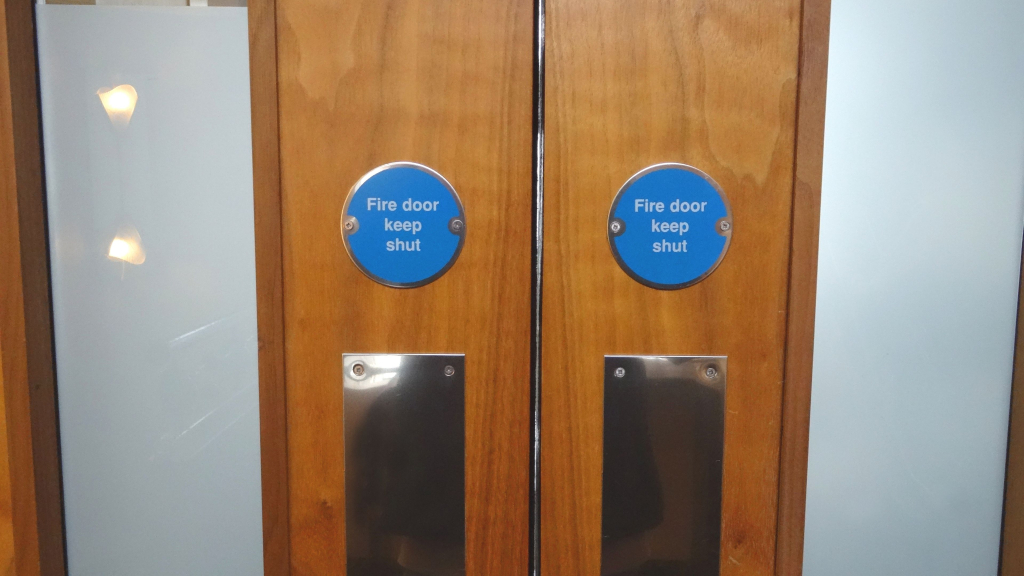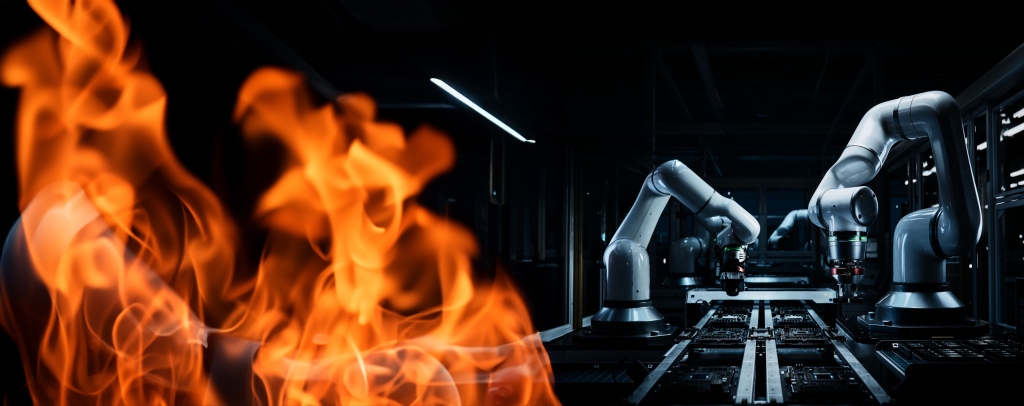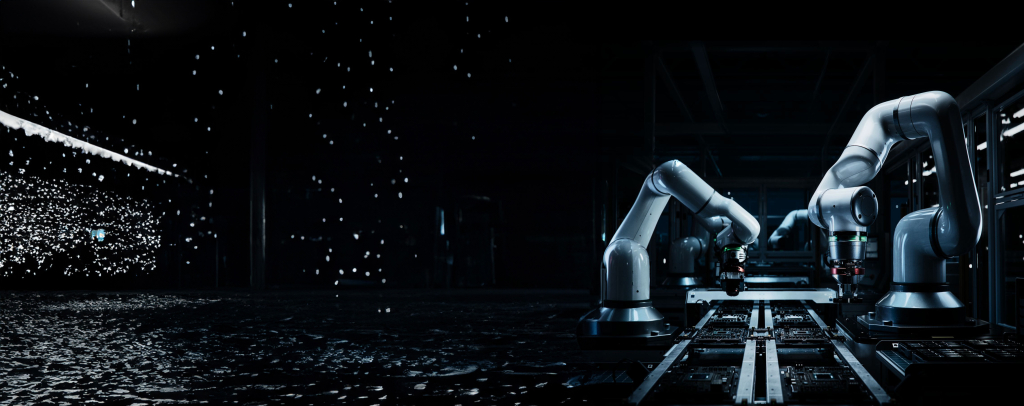What are the common issues with high-speed doors?
0 min read
High-speed doors are an essential part of many factories and warehouses. These doors are crucial to ensure traffic flows through different sections of the building effectively; while providing temperature and hygiene control and segregation. Because of this, it can be difficult to maintain productivity when these doors break or fail.
It’s worth being aware of some of the potential issues before you purchase a new high-speed door, so we’ve listed the six most common issues to look out for.
1. Damage
Vehicle collision with high-speed doors is, unfortunately, a common problem in busy factories, particularly where forklifts and heavy machinery are in use. These kinds of impacts cause a headache for those in charge of health and safety, and they also have the potential to grind a factory to a halt if the doorway is essential for operation.
Beyond the immediate logistical issues, crashes, knocks, and scrapes cause damage to the door’s mechanical and electrical components, leading to recurring problems. There are two main considerations as to the likelihood of high-speed doors could be damaged:
- The frequency and type of operation
- The nature of the traffic passing through
Simply put, a door that opens and closes frequently and at high speed is more likely to be damaged. All high-speed doors will close on a timer; in some cases, they can remain open for the duration of the task at hand; however, where there are temperature or hygiene controls within a room, the timers will be set to a few seconds to reduce any risk to the integrity of the product in storage.
The shorter the timer and more frequent the operation, the higher the risk of collision. Some doors, like our Rapidor Impact, are self-repairing. They have built-in impact resistance and will reset following a crash. Other safety features include a light grid which prevents the door from closing if there is an obstruction; in most cases, this is more effective than a bottom safety edge which relies on impact to stop the door.
The type of traffic that uses high-speed doors also impacts risk of damage. For example, if forklifts are in use, their speed and weight can cause damage with even the smallest of impacts. Also, if there is a lot of variation in traffic types this can cause issues as the activation may be well suited to some types of traffic but not others.
Check our guide here if you’re wondering how you can avoid damage to your fast-action doors.
2. Poor quality components & lack of servicing
Another common cause of issues with speed doors stem from poor-quality components, often combined with inadequate servicing. High-speed doors are complex machines, and see frequent use. Like any machine of this nature, regular and thorough servicing is needed to avoid future breakdowns. Proper planned maintenance is vital for the safety features and mechanisms that operate the doors, especially if they work around the clock.
Ignoring the need for servicing can have substantial financial consequences if the door fails. Tekta offer audits, health checks and maintenance – you can read more about these services here.
Alongside servicing, component quality is another commonly found issue. A cheap motor, for instance, will burn out quicker than one of a higher quality. Using high-quality components is especially important if the door is in constant use or exposed to intense weather and extreme temperatures.
3. Long wait times for replacement or spare parts
Damage causes 8/10 door replacements, so avoiding impacts should protect your high-speed door from failure. At times, though, parts may need replacing by a specialist engineer. If the part or component you need is on a long lead time, you could be waiting weeks or even months before the door is operational again. Waiting for this long can be financially damaging. Sometimes delays are unavoidable; however, does your supplier keep spare parts in stock, either internally or at your site? This is essential for ensuring that doors can be back in action as quickly as possible.
Servicing and health checks are also great ways to help avoid long lead times for spares. When engineers can identify worn or failing parts before they break, they can be repaired or replaced with minimal disruption to the door’s operation.
4. Incorrect automation
High-speed doors are automated to open and close as a vehicle approaches – this helps ease traffic flow on the factory floor. However, if these automation systems are not installed incorrectly, the door can suffer unnecessary wear and tear and even be a safety risk.
Automation issues are particularly apparent in busy areas with high traffic flows. For example, the motion sensors that tell high-speed doors to open can be triggered inadvertently, damaging the lifespan of the door overall. High-speed doors which open unnecessarily are particularly hazardous for rooms with temperature or hygiene controls.
5. Wash down in hygiene areas
For some factories, the strict hygiene measures in place can interfere with the operation of doors.
Hygiene measures such as washing and cleaning routines can cause issues with the electrical components of high-speed doors if they are not specified correctly. Another issue may be that the design of the door does not allow some parts of the door to be cleaned, leading to dirt and dust traps. In these areas, it is vital to choose a high-speed door that is fit for purpose.
Sometimes, the problem might not be the door itself, but that it is not suited to your needs. Factories with rooms that must adhere to hygiene measures, for example food storage, will need to select a door with the correct seals to keep out pests, ensuring the safety of your products.
If your factory has specific hygiene requirements, our Rapidor Food can be fully washed down and can be specified with aa built-in anti-rodent barrier.
6. Insufficient wind resistance
Strong draughts and air pressure can occur both internally and externally, so your high-speed doors must be able to withstand the pressure. Issues arise when doors are not specified accurately for wind resistance before installation. With strong force, the mechanisms that operate high-speed doors may become damaged or misaligned, or the doors may not open and close in these situations. If winds are powerful enough, a high-speed door may blow out completely requiring an engineer to repair.
Tekta, and many other manufacturers, can offer a range of internal and external doors with built-in wind resistance and damage mitigation features, so it is important to have this conversation when choosing a new door.
What can we learn?
The six issues discussed in this article provide two essential lessons:
- Make sure you choose the right high speed door to fit your needs
- Commit to essential, regular maintenance of your products
Issues occur when a door is either unfit for purpose or isn’t maintained correctly, leading to unreliability, loss of productivity, health & safety issues, and unnecessary costs.
When choosing a high-speed door suitable for your needs, there are many factors to consider. For more information on how to avoid common issues, check out our handy guide for choosing the right door.





